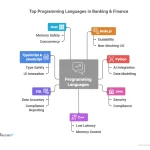
No matter their time horizon or risk tolerance, smart investors know to diversify across an array of assets. Diversifying with mutual funds or exchange-traded funds is easy, while you could also divide among company size (large, medium or small-cap stocks) or geography (domestic or international).
Diversifying can reduce the chance of your investments suffering as one investment or asset class loses value, though returns may not be as high when investing solely in one asset class.
1. It’s a Long-Term Strategy
Diversifying is your best long-term defense against risky investments, since investing all your money in stocks could result in its total collapse and wipe out everything in your portfolio. By contrast, having investments like bonds or real estate diversified among them might cause less severe declines than investing exclusively in stocks would.
Diversifying investments also provides you with more consistent returns over time. By spreading out your money among multiple types of investments, any positive news for any one may help offset negative developments elsewhere.
Add international investments to further your diversification and ensure peace of mind during retirement. Although you cannot entirely remove all the risk involved in investing in foreign companies and currencies, mutual funds or ETFs offer international exposure at much cheaper cost than individual stocks can help you meet your retirement goals more comfortably.
2. It’s a Way to Manage Risk
As the old saying goes, don’t put all of your eggs into one basket. Diversification allows you to avoid potential pitfalls associated with investing solely in one asset class.
Diversifying investments within one sector or industry helps protect you against negative changes, while still taking advantage of good news that affects multiple airlines or the transportation industry overall. If you invest in airline stocks, for example, diversification protects you from being adversely impacted by changes that impact travel negatively. It also reduces your chance of missing out when positive news hits all airlines simultaneously or overall transportation sector as a whole.
Diversifying within an investment category is also crucial, such as stocks, bonds and CDs. Each performs differently during economic downturns; so having a portfolio with different assets reduces your chances of losing all at once due to one asset going down in value and smoothes out returns so they don’t spike too dramatically – this is known as lower risk with greater potential return by professionals.
3. It’s a Way to Make More Money
Diversifying your portfolio is one way to ensure long-term financial gain even during times when individual investments don’t perform as anticipated. Different asset classes usually react differently to economic events, providing a cushion of steadier returns over time – stocks may decline while bonds may advance and CDs stay put.
Diversifying your portfolio in numerous ways is possible: by industry, size and geography of company holdings. For some investors, diversifying means purchasing multiple mutual funds or ETFs that target these segments of the market.
Investors can diversify by choosing asset classes with low correlations, such as large-, mid- and small-cap companies and international or domestic bonds. Target date funds offer another means of diversification by managing asset allocation and diversification automatically for you; typically shifting away from stocks as retirement approaches (please see our guide to investing and taxes for more details).
4. It’s a Way to Make Better Decisions
Diversifying by investing in different assets such as stocks and bonds is one way to diversify. Within asset classes themselves, diversifying by investing across sizes, industries, and geographic locations is another approach to diversification.
Diversifying can reduce the impact of market movements on your investments by decreasing the likelihood that all your holdings move at once, meaning when one investment loses value it won’t have as severe an effect than losing more investments at once.
Diversification doesn’t guarantee higher returns or eliminate risk in an unpredictable market; rather, it helps you meet your financial goals more easily by reducing volatility and offering potential steady growth opportunities. Diversification provides protection from losing all of your investments if one or more falter – an essential safeguard.






